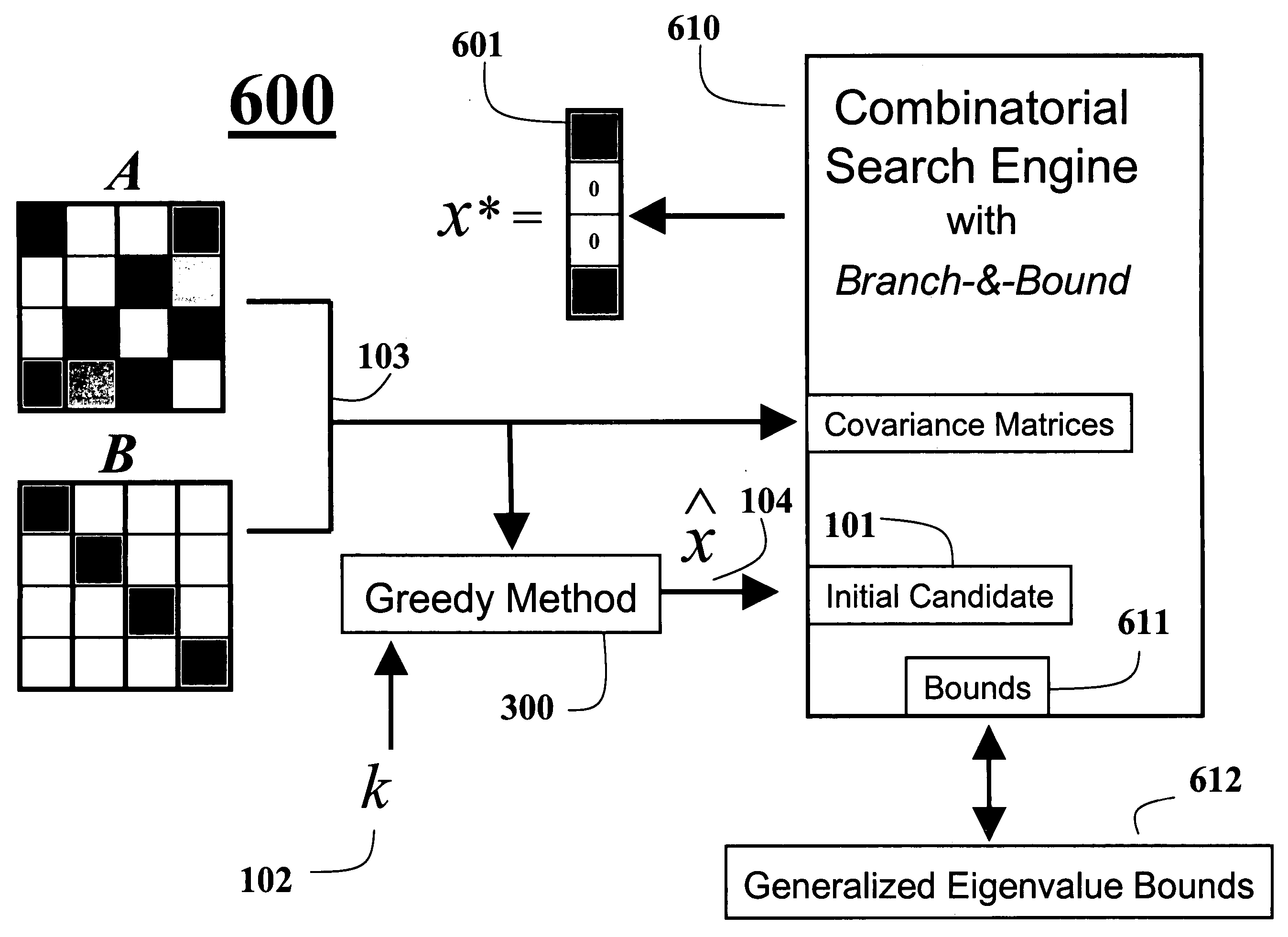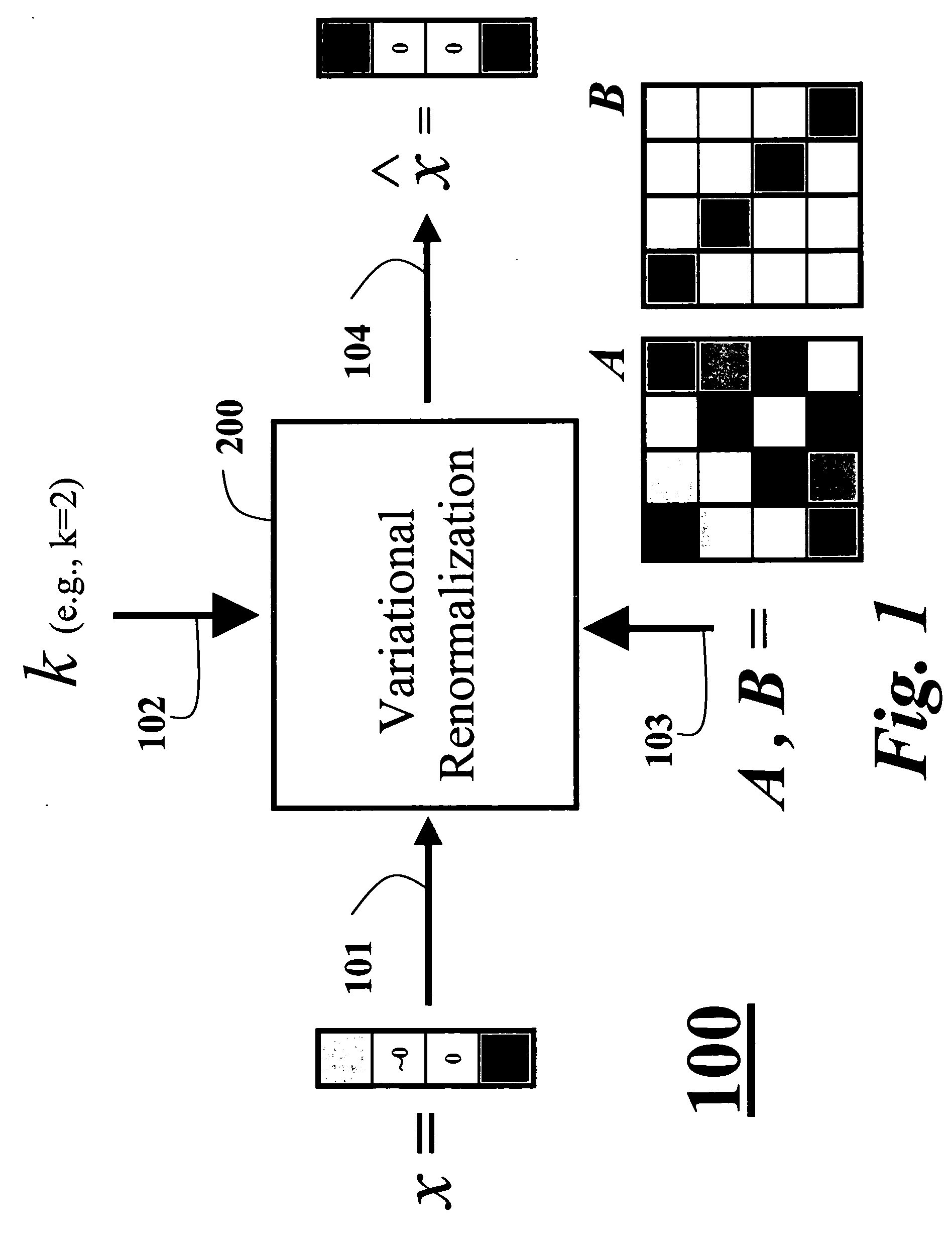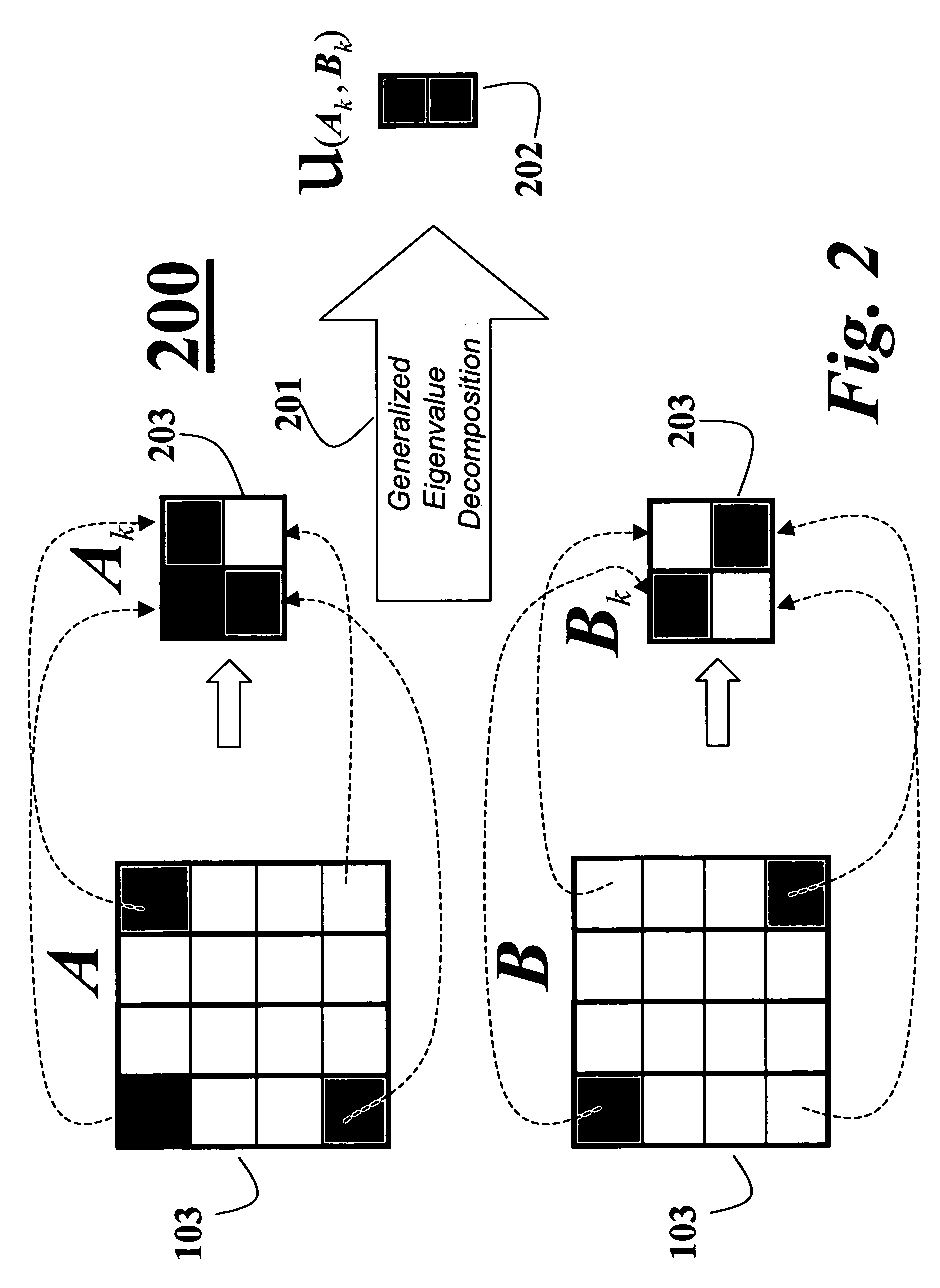Spectral method for sparse linear discriminant analysis
a linear discriminant and spectral method technology, applied in the field of linear discriminant analysis (lda), can solve problems such as lack of sparseness
- Summary
- Abstract
- Description
- Claims
- Application Information
AI Technical Summary
Benefits of technology
Problems solved by technology
Method used
Image
Examples
Embodiment Construction
[0030] One embodiment of our invention provides a method for performing sparse linear discriminant analysis (LDA) on data using spectral bounds. The sparse LDA can be used to find solutions to practical combinatorial optimization problems.
[0031] In contrast with the prior art, our invention uses a discrete formulation based on variational eigenvalue bounds. The method determines optimal sparse discimininants components using a greedy search for an approximate solution and a branch-and-bound search for an exact solution.
[0032] Maximized Candidate Solution
[0033] Using FIG. 1, we now describe a method 100 for improving a previously obtained candidate solution 101 to a practical combinatorial optimization problem of sparse LDA according to an embodiment of the invention. Inputs to the method are a data vector x 101 of elements, that is the candidate solution of the problem, a pair of covariance matrices A and B 103, and a sparsity parameter k 102. The sparsity parameter k denotes a m...
PUM
 Login to View More
Login to View More Abstract
Description
Claims
Application Information
 Login to View More
Login to View More - R&D
- Intellectual Property
- Life Sciences
- Materials
- Tech Scout
- Unparalleled Data Quality
- Higher Quality Content
- 60% Fewer Hallucinations
Browse by: Latest US Patents, China's latest patents, Technical Efficacy Thesaurus, Application Domain, Technology Topic, Popular Technical Reports.
© 2025 PatSnap. All rights reserved.Legal|Privacy policy|Modern Slavery Act Transparency Statement|Sitemap|About US| Contact US: help@patsnap.com



